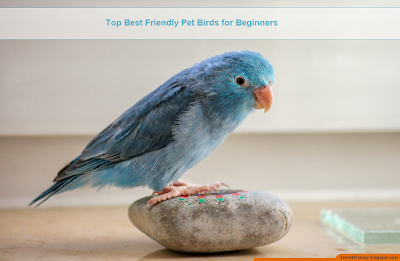Terrarium causes an extraordinary blessing and excellent or gift, to can be amassed surprisingly fast and looks extremely excellent. Glass globes are presently promptly accessible at garden nurseries, and air plants like the Tilandsia that we utilized in this terrarium are even conveyed at Home Depot during certain seasons. I think at one point air plants were more diligently to find, yet now they're getting very normal. Terrariums are easy to make and keep up, and are ideal for hanging close to a work area, bed, or by the kitchen window where they can be respected and appreciated.
Step 1: What You'll Need to Make a Terrarium
- Activated charcoal
- Well draining potting soil (cactus & succulent soil can be a good choice here)
- Various mosses
- Small sticks or bark
- Minerals, shells, or stones
- Succulents, if you like, although, it's not recommended to mix succulents and plants due to different watering requirements - we did anyway
- Glass globe to house the terrarium - this can be purchased new or a repurposed glass jar or bowl that has a pleasing volume
- Small plants well suited terrarium life
- Air plant like tilandsia, or another bromeliad you like
- Sand
- A nice hook or string to hang it by
- Spray bottle or mister
Stage 2: Adding the Sand Layer to the Terrarium
The base layer in the terrarium is a slender layer of sand or stones for waste. We picked sand on the grounds that Long Island (where the terrarium was developed) is truly one goliath heap of sand, so on the off chance that you burrow down a piece, it's promptly accessible and free. Little stones may look more pleasant.
Locate a little cup, scooper or channel to stack the sand into the terrarium. It doesn't take a lot, 1 cup of sand is presumably all that could possibly be needed.
Stage 3: Adding an Activated Charcoal Layer to the Terrarium
The following layer to place in the terrarium is initiated charcoal or enacted carbon - same thing. This is the stuff from your Brita water channel or fish tank channel - in the event that you have that, throw it in there. Else, you can purchase modest quantities on the web, or skirt this progression totally. I coincidentally had a mess of initiated charcoal lying around for a future undertaking so we took a 1/4 cup or somewhere in the vicinity and included it in.
You can contrived a straightforward cardboard chute to convey materials unequivocally where we needed them in the terrarium. The chute, in addition to a push stick or brush works obviously superior to the landfill strategy.
The enacted charcoal layer just keeps things "new", or so I've perused.
Stage 4: Adding the Terrarium's Soil Layer
Next, include an inch or two of well depleting soil. I blended some gardening soil in with delicious soil to accomplish a decent mix. You needn't bother with a lot, as the plants themselves accompany a dirt bunch that will probably permit them to get by all alone for a long time.
We saw the paintbrush as accommodating in moving the dirt around. In the event that you were making a bigger terrarium, or working with one that had a bigger gap, I think situating plants and soil mediums would be a lot simpler, yet too bad, we loved the appearance of this globe and gave a valiant effort.
Stage 5: Adding Larger Features to the Terrarium
We're disrupting a cardinal guideline here of terrarium fabricating and remembering both a plant and a delicious for a similar terrarium. By and large it's idea that the little plants appropriate to life in a terrarium require unexpected day to day environments in comparison to succulents. I anyway am a non-conventionalist and decided to defy this guideline.
The living plant we picked was generous and deliberately planted at the rear of the terrarium where it's probably going to remain moister. We situated the delicious on a little slope of soil so it would deplete first, just as found it closer to the initial which is probably going to be a dryer domain. I'm certain it won't take excessively long for terrarium specialists to address my conceivably deadly slip-up, in any case, we truly needed to join the two plants and succulents in a solitary terrarium.
It tends to be simpler to situate the plants before filling the terrarium with soil, and afterward refill the space between the root wads of the plants. You can likewise basically burrow little openings and plant typically. The two strategies functioned admirably for us, yet the greater the plant, the more sense it makes to place it in before the dirt, and afterward include the dirt around it.
Try not to pack the terrarium with huge components! There's many extra little components that we're including, so it's imperative to leave yourself some space to be imaginative with what little space remains.
Stage 6: How to Add Small Features to a Terrarium
We utilized a couple of since quite a while ago took care of tweezers to situate extra things inside the terrarium. Chopsticks additionally function admirably.
We included a healthy portion of a couple of various kinds of dried, decorative greeneries, a mineral that my mother truly prefers, and a little stone egg. (My mother has a PhD in Pre and Perinatal Psychology, what would i be able to state, she's truly into eggs.)
We likewise incorporated some dried bits of tree rind from certain trees that were shedding this previous fall in Oakland. This was followed up by embeddings a little air plant called Tilandsia. These plants don't should be planted in the regular sense - they require no dirt and basically remove their supplements and water from the air. They are ideal possibility for terrariums.
At last, we included some brilliant shells that we had gathered at the sea shore (wash them completely as they may acquaint salt with the minuscule biological system, and plants and salt don't manage everything well) and a little minimal arrangement of thistles that had fallen off of a prickly plant that I used to claim, however passed on.

Stage 7: Terrarium Accessories and Maintenance
It very well may be useful to purchase a couple of adornments for the terrarium. In the event that you've made a glass terrarium in a globe that isn't self supporting, you'll need an a hook. I think these iron hook look very pleasant when matched with the terrarium just google (iron hook for terrarium ) you will many beautiful hook specially in Amazon
You've likewise got the opportunity to water the terrarium every now and then. Possibly more than once per week relying upon area and climate conditions. We set up with a double watering framework - the standard water can that administrations most customary house plants, and afterward a unique mister that is intended to splash down living things like the air plant. An ordinary splash bottle from the medication store will work fine and dandy, we simply needed to class the blessing up a piece.
Support on these little folks is entirely simple. Basically drape it in a territory that gets moderate sun (however not immediate sun if conceivable) and ensure you water the little folks once every week or somewhere in the vicinity. On the off chance that it's glancing genuine wet in there, or if shape or a muggy smell creates, you're unquestionably over-watering. On the off chance that the plant parts begin to shrivel, they you're likely under watering.
I'm anticipating making a bundle a greater amount of these later on out of recovered cool mirror volumes. I'll be keeping my eyes open for this sort of stuff at yard deals starting now and into the foreseeable future.
That's it if you realy enjoy this article tutorial please leave a comment or join our social media, or both :) for more
About the products mentioned in this article please don’t hesitate to buy theme from your favorite site ( Amazon, Gearbest or Aliexpress) using my personal links (in the Sidebar of the Article below social icons),No extra cost, just please make sure to add your product to site's ( shopping card ) if you need time before completing your purchase, thank in advance :)














